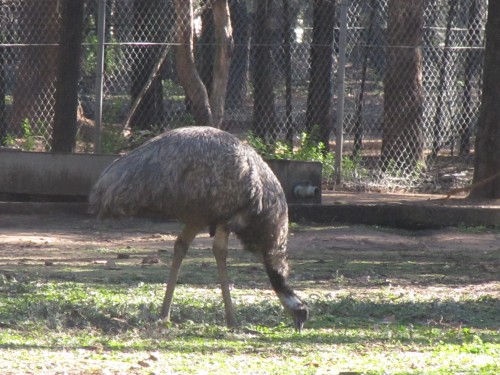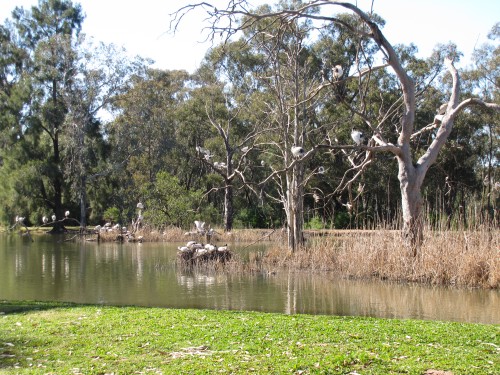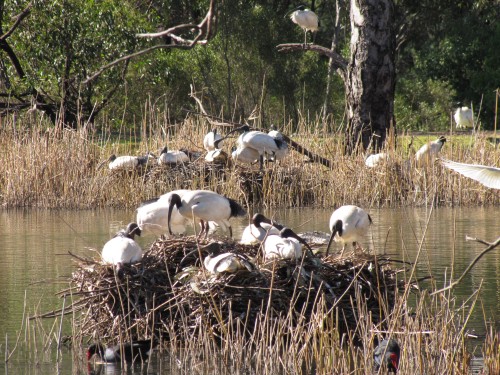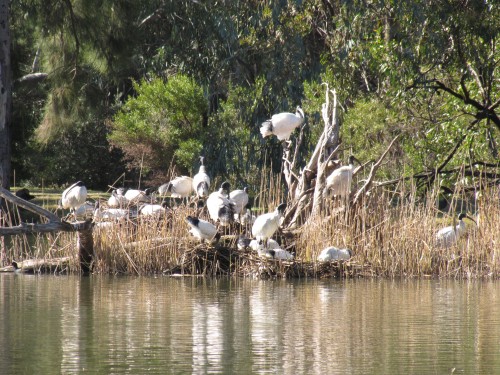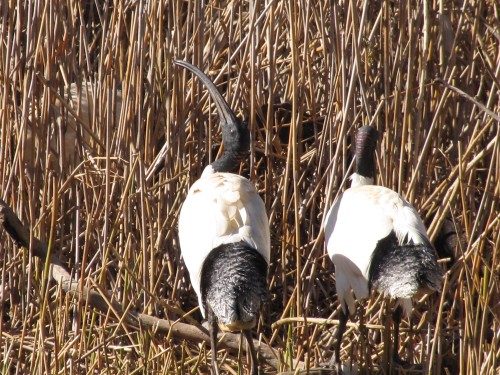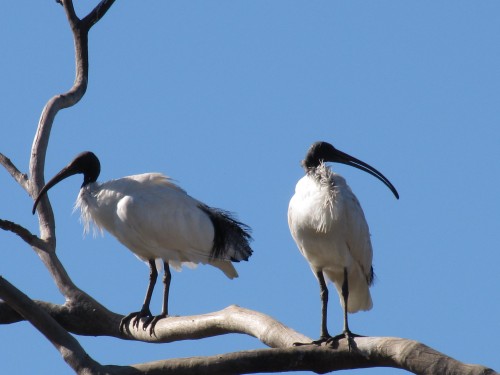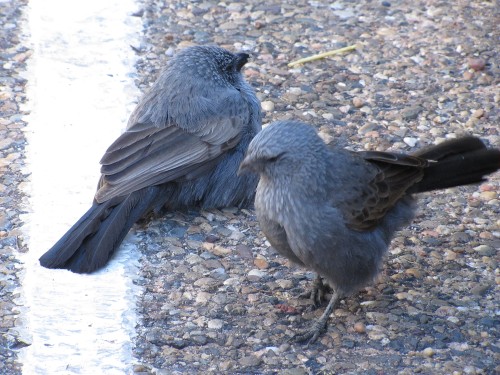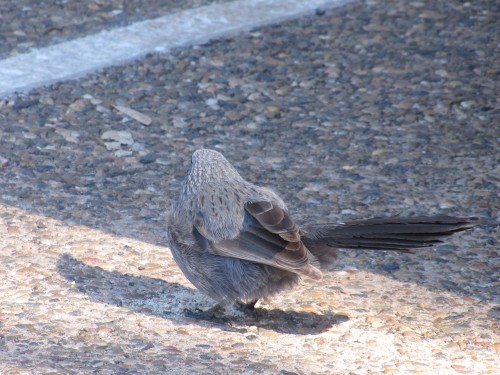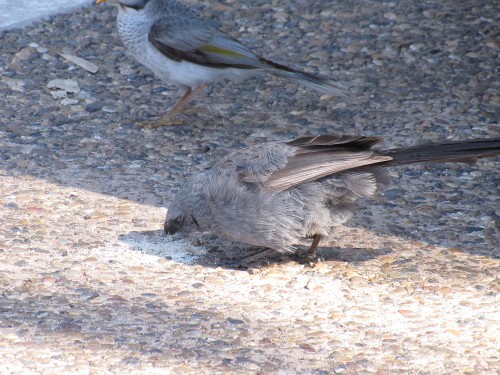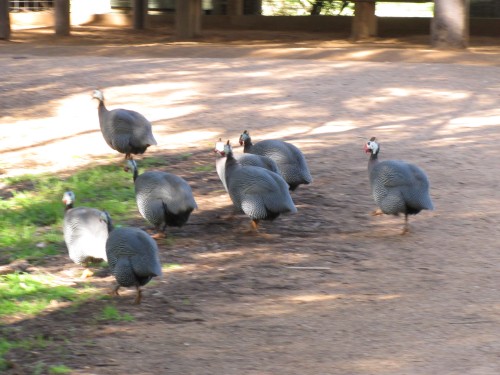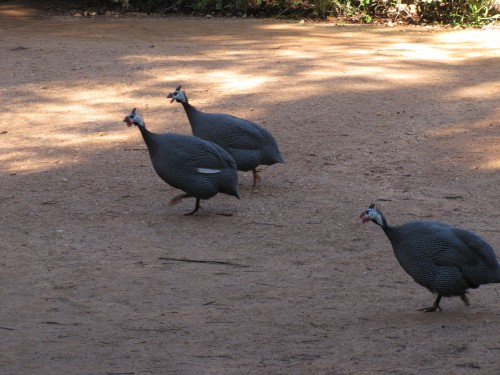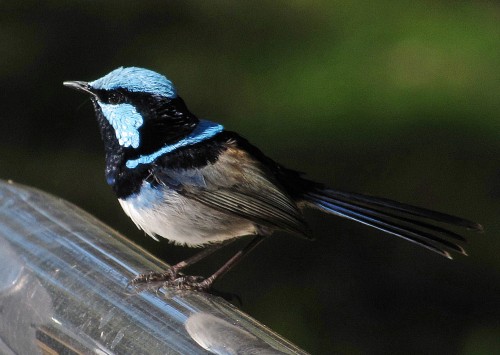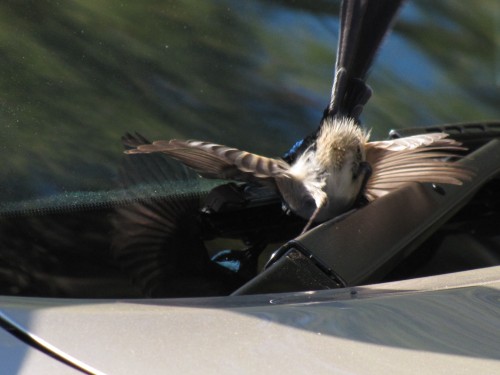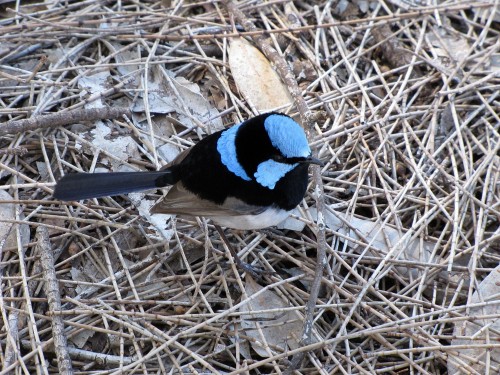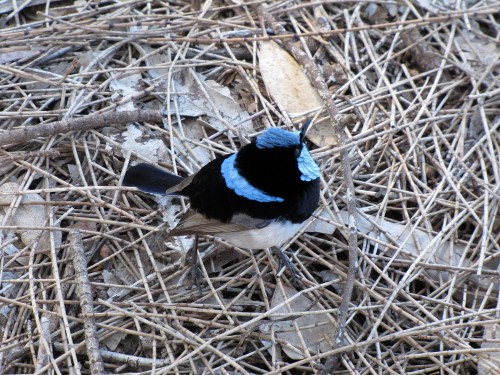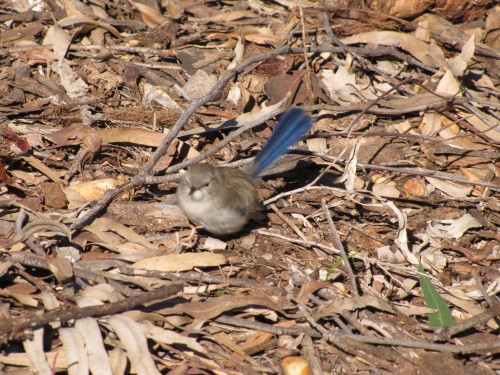Emu at Dubbo Zoo
It is always good to see an Emu, one of Australia’s iconic birds while travelling around this wonderful country of ours. There have been many times when we have seen literally hundreds of these large birds in the one place. At other times we only see them singly, or in small loose flocks up to a dozen or so.
When travelling from home in Murray Bridge, South Australia to visit family in Sydney we are always on the lookout as we travel across the Hay Plains. Sometimes we see none at all; on other occasions we have seen hundreds, including many young birds following their father. (The male hatches the eggs and cares for the young for about their first 18 months of life.)
The bird in the photo above was a single individual on the side of the road we travelled through the open range zoo, the Western Plains Zoo at Dubbo in central New South Wales. I don’t know if this bird is a captive bird making up a part of the display of animals in the zoo, or if it is a wild bird that has adapted to the easy life inside the zoo perimeter. Whatever the situation, it was quite at ease in its environment and not at all concerned about our car driving along just a few metres away.
White Ibis at Dubbo Zoo
Some time ago I wrote a few posts here on our visit last year to the Western Plains Zoo in Dubbo. This zoo is an open range zoo which complements the Taronga Park Zoo in Sydney. As we had never been to this zoo before we were looking forward to our visit over two days – tickets are valid for two days which I think is a great idea. One needs two days to see everything but we only had an afternoon and a part day due to a funeral of a family member. Our planned visit to this area fortuitously coincided with the family getting together.
For my readers who may not know much about this zoo, it was established many years ago by Taronga Zoo. It is situated a few kilometres south of the rural city of Dubbo which is on the western plains of New South Wales about a five hour drive from Sydney. The animal enclosures are quite large and visitors are able to drive their cars from one enclosure to the next. Going via bicycle is another popular method and these can be hired for the day, or you can bring your own. Some energetic people even walk from one enclosure to the next.
On our visit we stopped to have lunch by one of the lakes which have been built in the zoo property. This lake has become a well occupied wetlands area. My interest was mainly in the birds present, but I am sure that many other creatures inhabit this wetland. The most prominent bird present was the White Ibis. In today’s photos I have shown some of them on nests in the reeds as well as general shots of the colony.
Further reading: all are links to more articles and photos taken at the Western Plains Zoo
Apostlebirds by the dozen
Apostlebirds are not all that common in South Australia. In fact, they are confined to a few locations in the mid-north of the state plus one site I know of near the eastern border south of Renmark. In parts of New South Wales, however, they are widespread and common in many places. They are also very confiding birds and will happily share their little patch of bushland – if you share some of your morning or afternoon tea.
On our recent visit to the Western Plains Zoo at Dubbo I was surprised at just how common they actually are, but then there is plenty of food for the taking, both in the animal enclosures and in the picnic areas where human food scraps are in abundance. It is not surprising then that I was able to get at least several good photos during our visit.
Apostlebirds are not the most photogenic birds found in Australia, being only dull grey with some black patches. What they lack in colour they certainly make up for with their gregarious nature. Because of this nature they certainly are one of my favourites and I always look out for them wherever we travel.
Helmeted Guineafowl
This is not a sight you see very often in Australia. Helmeted Guineafowl are an introduced species present in a few scattered locations around the continent. They are nowhere in abundance, only existing in a few locations and usually as a result of an escape from a farm, park or zoo.
This small group obviously have the run of the grounds of the Western Plains Zoo on the outskirts of Dubbo. I am assuming that this population is a self-sustaining group living permanently in the grounds of the zoo and feeding upon food left for other birds and animals.
This species is native to Africa but is often kept in small domesticated populations in various places around Australia. I assume that there are also some self-sustaining feral populations too.
My next door neighbour has about a dozen which often stray onto our property. I wrote about them here.
Great birding moments #34: Superb Fairy-wren
Two days ago I wrote about the birds we saw at the hippo enclosure when we visited the Western Plains Zoo in Dubbo recently. One species I didn’t mention was the Superb Fairy-wren because I wanted it to have its own post. Today’s photos feature a male bird in full breeding plumage plus one shot of a female (see below).
There were several birds, both male and female, hopping around the viewing platform at the hippo enclosure. I tried hard to get a few photos but they were constantly on the move. This is typical of this species; it makes effective photography a real challenge.
As we returned to our car – the open range zoo is a “drive yourself” experience – a male Superb Fairy-wren was fluttering around the car next to ours. The photo above shows him on the roo bar at the front of the vehicle. He was very agitated and ignored me only a metre or so away from him. He then flew many times at his reflection in the car’s window (see photo below).
A number of Australian bird species display this aggressive behaviour. Thinking that their reflection is an enemy attempting to take over its territory, the male bird will attack its own image many dozens of times. Not only do they attack the reflection in the windows of a car, they can also be attracted to the outside mirrors, shiny hub-caps, shiny bumper-bars and any reflective surface. A few years ago our resident Willie Wagtail was attracted to the mirrors on our car. Day after day for periods up to a half hour it would attack the mirror, leaving a very unpleasant residue on each mirror in the process.
Some of the species which display this behaviour include Australian Magpies, Willie Wagtails, Magpie Larks, finches, honeyeaters, and ravens and crows. A few years ago we had a Little Raven in our garden which was annoyed by its reflection in our bedroom window glass. Every morning around dawn it would come and peck loudly on the glass. Being suddenly woken in this fashion at such an early hour was not very pleasant, and we were pleased when it moved on and no longer came knocking well before our normal time of rising.
This post is #34 of a series called Great Birding Moments. I think the title is self explanatory. Sadly, it is over six years since the last in this series, so I think I will have to rectify that in the coming months. You can access a list of the articles by clicking here.
